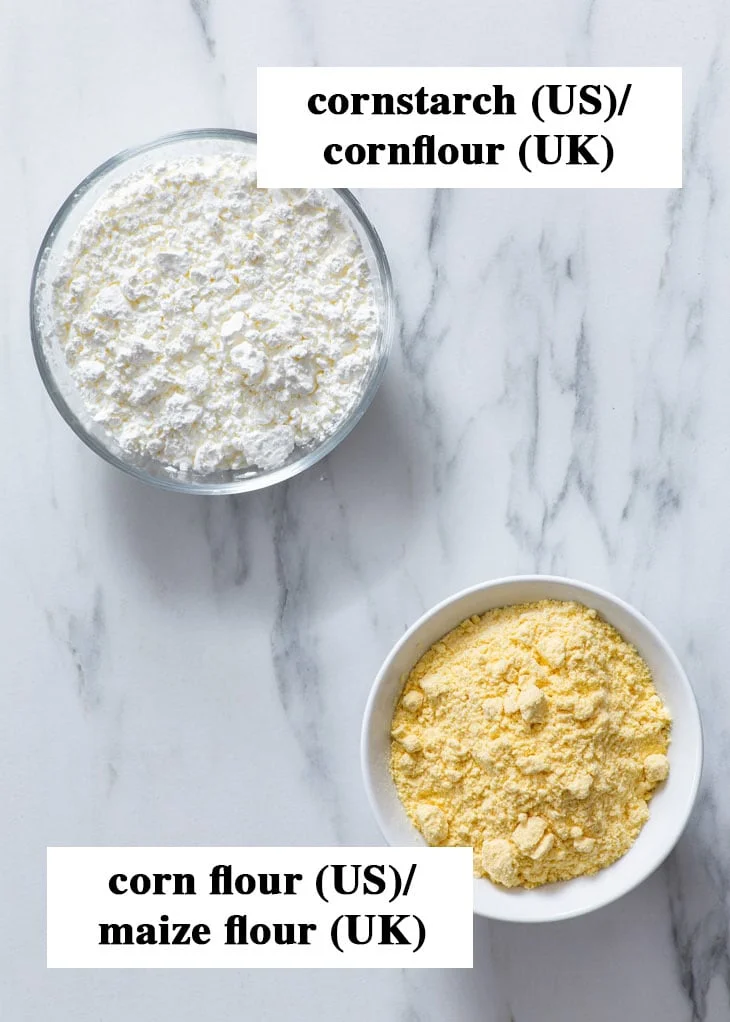Exploring the World of Corn: Starch vs Flour
Hey there, wonderful parents! Are you ready to embark on a fun-filled exploration of the corny world of corn starch and corn flour? Have you ever stood in the baking aisle, scratching your head, pondering whether these two pantry staples are really just two peas in a pod? Well, fret not! We’re here to lead you through the maize maze with a pinch of joy and a sprinkle of clarity!
What’s All the Kernel Fuss About?
First things first—let’s clear up some of that corn-fusion! Corn starch and corn flour may come from the same crop, but they’re as distinct as popcorn and corn on the cob. Both have their unique uses in cooking and baking, and we’re going to dive into the nitty-gritty so that you can become your household’s corn connoisseur. It’s all about getting to the kernel of the matter!
Corn Starch: The Thickening Superstar
What is corn starch? It’s a finely ground powder derived from the endosperm of the corn kernel—it’s the part that’s all about giving you that hearty, cozy feeling. Corn starch is a staple thickening agent that’s perfect for creating luscious gravies, sumptuous sauces, and fabulous fillings. Its superpower? It becomes clear and thickens without imparting flavor, making it the silent hero of your thickening needs.
Corn Flour: More Than Just Finely Ground Corn
Moving on to corn flour. This powdery goodness is whole corn kernels, fully ground—bran, germ, and all! It adds a distinct corn flavor and is commonly used in breading, in making cornbread (of course!), and in various other recipes where you want that corn taste to pop.
A Closer Look at Their Texture and Composition
Texture talks and composition communicates! Corn starch is all about that silky smoothness, while corn flour has a bit more of a hearty edge. This difference can make or break your recipes. Culinary success is all about precision, so getting to know these textures will make you a master of your kitchen domain.
Texture Triumphs
- Corn Starch: It has a very fine, powdery texture. It’s kind of like the fairy dust of the kitchen—you can’t always see it, but its magic is undeniable!
- Corn Flour: It’s more similar to wheat flour but with a notable grit, like the gentle abrasiveness of a sandy beach. It’s your go-to for an earthy, textured finish in your culinary creations.
Composition Chat
- Corn Starch: Pure starch—no gluten here! Perfect for our gluten-sensitive pals out there.
- Corn Flour: It’s the whole kernel shebang and may contain gluten, depending on how it’s processed or if it’s mixed with wheat flour. Gluten alert for our sensitive friends!
But wait, there’s a twist in the tale! Ever heard of corn meal? It’s the coarser cousin of corn flour, often used in polenta or as a rustic alternative for flour. The world of corn is full of surprises, isn’t it?
Nutrition Notes: A Brief Peek at Health Benefits
Both corn starch and corn flour offer up some a-maize-ing benefits. Packed with carbohydrates, they provide that energy boost your family might need for soccer practice or conquering homework sessions. Plus, they have some lovely vitamins and minerals that keep the family marching to a healthy beat.
Now that we’ve peeked into the panoramic view of the differences between corn starch and corn flour, you might be pondering how to wield these powders in your everyday culinary quests. Not to worry! In the next section, we’ll be stirring through recipes, tips, and tricks to turn you into a wizard of the corn craft. So, stay tuned as we navigate through a cornucopia of ideas that will transform your family meals!
Remember, the distinction between corn starch and corn flour matters in the world of cooking and baking. The secret lies in their unique textures, how they react to heat, and the flavors they impart in your dishes. Choose wisely, and you may just become the ultimate kitchen alchemist, turning simple meals into gold—well, golden-corn-colored deliciousness, to be exact! And on that corny note, we’ll continue our exploration in the next section—stay hungry for knowledge, my friends!

“`html
5 Essential Corn-cepts for Parents Prepping Corn Starch and Corn Flour
1. The Allergen Awareness Angle
Given the growing concerns about food allergies and sensitivities, it’s key to know the allergen profile of corn starch and corn flour. While corn starch is typically gluten-free, some brands may be subject to cross-contamination if processed in facilities that also handle wheat. When it comes to corn flour, those labels can be tricky! Some types may include additives or be blended with wheat flour, so always double-check the packet, especially if serving to gluten-intolerant kiddos.
2. Storage Strategies for Freshness and Flavor
To ensure your corn starch and corn flour remain as fresh as the day you bought them, keep them in airtight containers away from heat and moisture. Oftentimes, a cool, dark pantry shelf is the perfect spot. This way, they’re ready to go when you’re whipping up a family favorite, and you won’t have any unpleasant surprises with clumpy or stale ingredients. Plus, it extends their shelf life, giving you more bang for your buck!
3. Thickener Thoroughfare: Corn Starch in Action
When using corn starch as a thickener, a little goes a long way! Mix it with a cool liquid first to make a slurry before adding it to your hot dish. This prevents lumps and ensures a smooth, velvety texture. Also, be mindful that overcooking can break down the starch, resulting in a thinner consistency, so add it towards the end of the cooking process.
4. Baking Brilliance with Corn Flour
When baking with corn flour, remember that it doesn’t behave the same way as regular wheat flour. It’s often best used in combination with other flours to achieve the right balance of texture and structure. Experiment with different ratios to perfect your gluten-free recipes, and don’t be afraid to get your kids involved in the taste-testing process—education and fun all rolled into one!
5. Cultural Cooking & the Corn Connection
Corn starch and corn flour aren’t just staples in American homes but also play pivotal roles in global cuisines. From thickening agents in Asian stir-fries to the base of a perfect tortilla in Mexican dishes, these corn derivatives help introduce your family to a world of flavors. Teach your little ones about different cultures through cooking, and explore new recipes that highlight the versatility of these corny characters.
Fantastic Family Recipes: Harnessing the Power of Corn Starch and Corn Flour
Getting practical with your newfound knowledge is the best way to learn. Start by incorporating corn starch in your next gravy or sauce. Marvel at how it transforms the texture without altering the taste. Or perhaps let corn flour take center stage in homemade cornbread, bringing its nutty, wholesome flavor to the fore.
Don’t let corn’s versatility end there, though. Corn starch can be a great base for DIY face paints or playdough for a rainy day activity with the kiddos, while corn flour can be used for dusting pizza stones and creating that perfect crust. The possibilities are endless, and it’s all about having fun while you learn and grow together.
As you continue to play around with these ingredients, you’ll discover your own tips and tricks that work best for your family’s unique tastes and needs. It might take a bit of trial and error, but that’s part of the adventure. And who knows? Maybe your little ones will grow up to be the next great chefs or food scientists, all thanks to a little inspiration from the humble corn.
Understanding the difference between corn starch and corn flour is just the beginning of your journey with these intriguing ingredients. They’re more than just items on a grocery list; they’re educational tools, bridges to other cultures, and gateways to family fun. Embrace the journey, and let the culinary exploration begin!
“`
For more great articles please see here. For more information see here
Disclaimer
The articles available via our website provide general information only and we strongly urge readers to exercise caution and conduct their own thorough research and fact-checking. The information presented should not be taken as absolute truth, and, to the maximum extent permitted by law, we will not be held liable for any inaccuracies or errors in the content. It is essential for individuals to independently verify and validate the information before making any decisions or taking any actions based on the articles.




